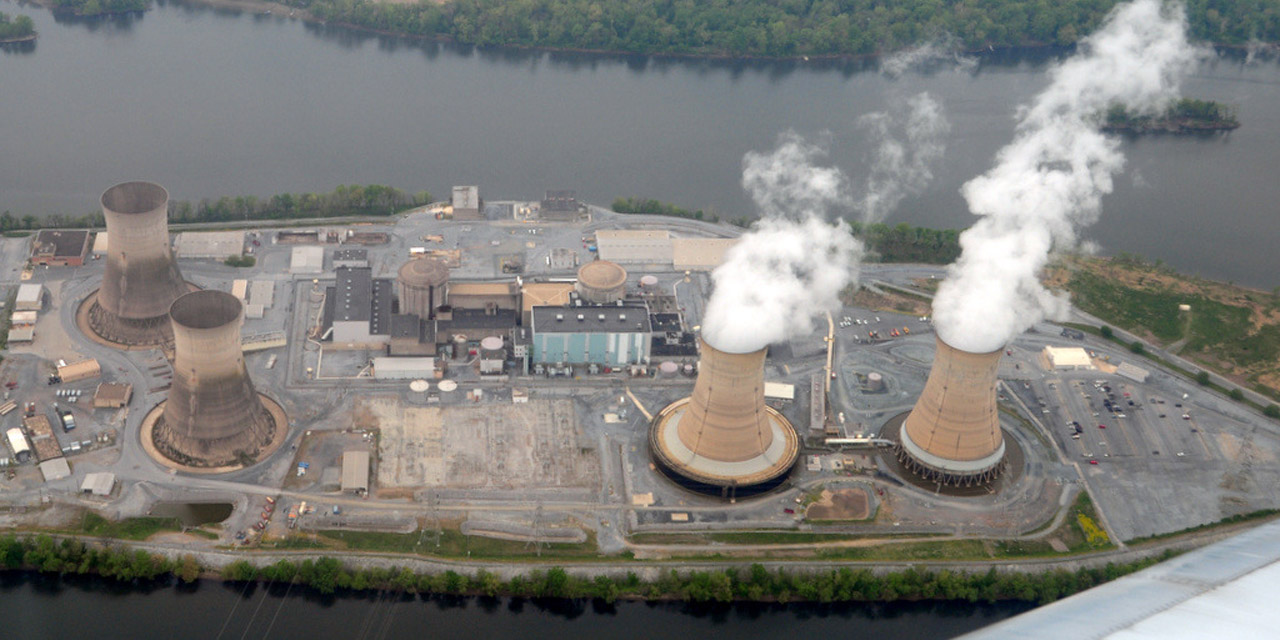The Vogtle-4 diesel generator building in March. (Photo: Georgia Power)
The total bill for the reactor expansion project at the Vogtle nuclear plant in Georgia is now expected to exceed $30 billion, according to the Associated Press. The original price tag for the two Westinghouse AP1000 units was $14 billion.
U.K. energy minister Greg Hands cuts the ribbon on the Welding Centre of Excellence at Bridgwater & Taunton College’s campus. (Photo: EDF Energy)
The United Kingdom’s energy minister, Greg Hands, recently presided over the opening of one of three new training centers in England aimed at supporting EDF Energy’s Hinkley Point C nuclear build project in Somerset. The centers, according to EDF, will provide locals with the skills necessary to join the ranks of about 4,000 additional workers expected to be needed for the next phase of the power station’s construction. Hands unveiled the Welding Centre of Excellence, located on the Bridgwater & Taunton College campus in Bridgwater.
The accident at Three Mile Island revealed many areas for improvement in the safety of nuclear power that have been addressed continuously in the past 40 years.
Part one of this article, published in the May 2019 issue of Nuclear News[1] and last Friday on Nuclear Newswire, presented insights from the 1979 accident at Three Mile Island-2 and addressed several issues raised by a previous Nuclear News piece on the accident[2]. Part two discusses safety improvements that have been made by both the industry and the Nuclear Regulatory Commission over the past 40 years.
The Wyoming Energy Authority’s Glen Murrell (left) shakes hands with INL’s John C. Wagner at the MOU signing ceremony on May 4. (Photo: WEA)
Battelle Energy Alliance (BEA), the management and operating contractor for Idaho National Laboratory, has signed a five-year memorandum of understanding with the State of Wyoming to collaborate on the research, development, demonstration, and deployment of advanced energy technologies and approaches, with a special focus on advanced nuclear.
The nuclear power plant in Cattenom, France. (Photo: Stefan Kühn)
Bloomberg recently reported that nuclear power production in France declined to its lowest level in almost two years in April, with power output during that month falling to 21.7 TWh. The decline occurred as Électricité de France (EDF), one of the country’s major energy suppliers, dealt with long-term inspection-and maintenance-related halts to the operation of many of its 56 domestic nuclear reactors.
An artist’s rendering of the Hanhikivi plant. (Image: Rosatom)
Finnish energy company Fennovoima has terminated, effective immediately, its engineering, procurement, and construction (EPC) contract with RAOS Project Oy, a subsidiary of Russia’s Rosatom, for the delivery of a 1,200-MWe VVER-1200 pressurized water reactor at the Hanhikivi site in Finland’s Pyhäjoki municipality.
A pair of Westinghouse AP1000 reactors at China's Haiyang nuclear power plant.
China’s State Council recently approved the construction of four Westinghouse AP1000 reactors—two at China’s Sanmen plant in Zhejiang Province and two at the Haiyang plant in Shandong Province.
The plants currently house two AP1000 units each. Sanmen’s reactors are rated at 1,157 MWe and Haiyang’s at 1,170 MWe. Sanmen-1 and -2 began commercial operation in 2018. Haiyang-1 started commercial operation in 2018, and Haiyang-2 in 2019.
Alkali-silica reaction was confirmed at the Seabrook nuclear power plant in 2010. (Photo: NextEra Energy Resources)
Concrete structures built to last for decades, including reactor containment buildings and other nuclear power plant structures, are subject to the alkali-silica reaction (ASR), a reaction between alkali ions found in cement and silica, the two main components of concrete. The reaction forms a gel that absorbs water and expands over time, causing a buildup of pressure within the concrete that can eventually lead to cracking and deterioration.
Researchers at Argonne National Laboratory have successfully used electrochemical impedance spectroscopy (EIS) to detect ASR in the lab and believe it could be used for cost-effective, nondestructive testing at nuclear power plants.
Purdue University, in West Lafayette, Ind.
Purdue University and Duke Energy have announced that they plan to jointly explore the feasibility of using advanced nuclear energy to meet the university’s long-term energy needs, “a move that may be unprecedented for a college campus.” A small modular reactor could meet the current and future needs for Purdue’s West Lafayette, Ind., campus, as well as provide excess power to the state’s electric grid, according to a joint press release.
Annie Caputo (left) and Bradley R. Crowell
















